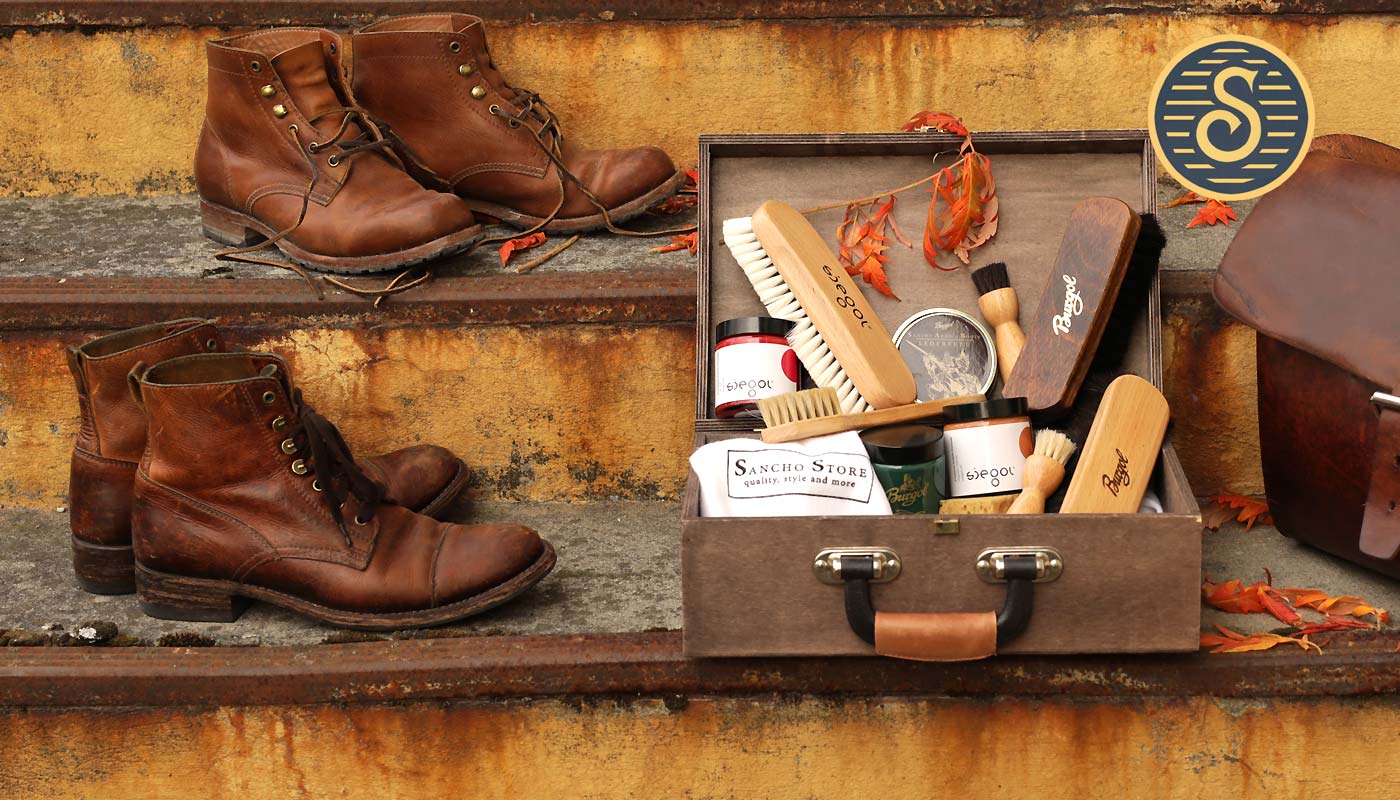- 20.05.2023
Dyeing leather is a DIY-friendly project where you can change the pigment of the material to the color you want.
Have you ever wondered how you could wrap your beloved old leather shoe or your trusty handbag in a whole new color dress? Well, here comes the good news: leather dyeing makes it possible! Whether you're looking to give your trusty companions a fresh look or just want to experiment, dyeing leather opens up a world of creative possibilities.
From rich, bold colors to subtle shades, the choice is yours. In this article, we'll take you on a journey into the exciting world of leather dyeing and show you how to turn old leather pieces into real eye-catchers. So grab your apron, sit down comfortably and let's dive into the adventure of leather dyeing together!
What you need to dye leather
- Deglazer: A leather degreaser is a solution that cleans the leather and prepares it for an efficient dyeing process.
- Spray bottle: After degreasing, you should carefully spray your leather with a little water so that it can better absorb the first layer of dye.
- Brush: Use a paintbrush or a wool brush to apply the dye layer.
- Leather dye: The type of dye you choose will determine the color and influence the result, feel and quality of your leather.
- Scraps of fabric: An old piece of cloth is helpful during the dyeing process to wipe away excess dye and clean up spills.
- Gloves: Dyeing can get messy, so wear gloves that cover your forearms for protection. Dishwashing gloves are suitable for this task.
- A ventilated and protected work area. The work area should be well ventilated as the paint can release fumes that are hazardous. Open the windows and turn on a fan if you are working indoors. If you are coloring outside, make sure it is a dry day and keep away from direct sunlight. Use a drop cloth or cut up a large garbage bag and tape it to your work area to keep it clean.
7 Types of leather dyes and finishes
The type of leather determines what type of dye you should use to achieve the right color and finish. Find out about these different leather dyes and their applications:
- Shoe polish: Shoe polish is a more temporary type of leather dye. The polish does not penetrate the fibers of the leather, so this dye is less permanent, although it is quick and easy to apply.
- Alcohol-based leather dyes: These dyes penetrate the surface of the leather and create more vibrant colors that last a long time. Alcohol can draw the moisture out of the leather and make the material stiff, so you may need a leather conditioner or finisher to restore the material.
- The sun: The sun can be a natural way to dye leather. Leaving your vegetable-tanned leather in the sun will darken its color. This process takes at least an hour, or longer depending on how dark you want your leather, as the sun's ultraviolet rays will turn a light-colored leather into a dark brown over time.
- Oil-based leather dyes: Unlike alcohol-based dyes, oil-based dyes do not remove liquids from the leather. Oil-based dyes penetrate the surface of the leather and dye the fibers with a stronger saturation. They are best suited for full-grain and top-grain leathers without surface treatment, as these fibers dry out more quickly.
- Water-based leather dyes: Water-based dyes contain fewer toxins than other dyes, but produce more muted colors. They make your leather supple.
- Resolene: You can apply leather resolene or acrylic dyes in thin layers as a leather finish. Once dry, the thin layers of acrylic will cure to a glossy, firm and protective finish on your leather; this can work on corrected grain leather where the fibers have been sanded down so that the Resolene provides a durable finish. Resolene is available in a variety of finishes and colors, making it a versatile leather dyeing option.
- Resin: A natural resin leather finish gives a finer and softer finish and provides some protection from dirt. Resin-based finishes are not water resistant and can work well.
Dyeing leather in 7 steps
Learning how to dye properly can take your leatherworking skills to the next level. Follow these steps to prepare, dye and finish leather:
-
Prepare the workspace. If you are working indoors, you should work at a large table. Open the window and turn on a fan to dilute the strength of the dye fumes. Keep the temperature at about 70 degrees Fahrenheit, cut open a large trash bag and place it on the work surface for protection. If working outdoors, choose a warm day when it's not too windy and stay in the shade.
-
Apply the degreasing agent. Using a clean cloth, apply your deglazer (or leather conditioner), which will break down the seal of the leather to allow the fibers to better absorb the dye. If you are working with leather shoes, remove the laces first and place some crumpled up paper on the insides to keep them dry.
-
Spray the leather with water. Gently moisten the surface of the leather. This allows the leather to absorb the paint evenly.
-
Start with a first coat of paint. Take a paintbrush, lightly add some paint and paint the edges of your leather material. It can be difficult to hide the brushstrokes. Therefore, use a cotton ball or sponge to fill in the rest of the surface. Apply the paint to the cotton ball and apply it in a circular motion.
-
Leave it to dry well. It will take at least a full day for the leather to dry completely.
-
Apply further thin coats. When the leather is completely dry, add another thin layer of dye to achieve an even dyeing result. There should be at least three coats, more if needed, to achieve the desired color.
-
Polish the leather. When you're done dyeing, you can use a leather finish or gloss varnish to get a shiny surface, or buff with a cloth to clean and smooth the surface. Let the leather dry, clean your work surface and enjoy the freshly dyed material.
Color control:
Leather that has already been dyed should be re-dyed in two steps. First neutralize the original color with an intermediate coat. Then repeat the dyeing process with the desired leather color.
For example:
- Re-dye white leather to black - first dye green or blue and then over-dye black in the second step.
- Re-dyeing white leather to dark blue - first dye diluted black (4 to 1) and then over-dye dark blue in the second step.
- Re-dye white leather to brown - first dye light green (e.g. Kelly Green) and then over-dye brown in the second step.
- Re-dye red leather to black - first dye green and then over-dye black in the second step.
- Re-dyeing green leather to black - first dye red and then over-dye black in the second step.
- Redyeing white leather to bright red - first dye yellow and then overdye red in the second step.
- Redyeing white leather to dark red - first dye tan (light yellowish brown) and then overdye dark red in the second step.
Color mixtures for intermediate colors:
Many leather colors can be mixed. You can obtain mixed colors and tones that are not included on the color chart.
In most cases, you can apply the basic rules for color mixing.
Some examples:
- Yellow and blue = shade of green
- Yellow and red = hue from orange to red
- Red and blue = hue from purple/violet to purple
- Red and purple = wine red hue
- Brown and yellow = Golden brown or light yellowish-brown (tan) shade
- Brown and red = chestnut red to dark brown shade








